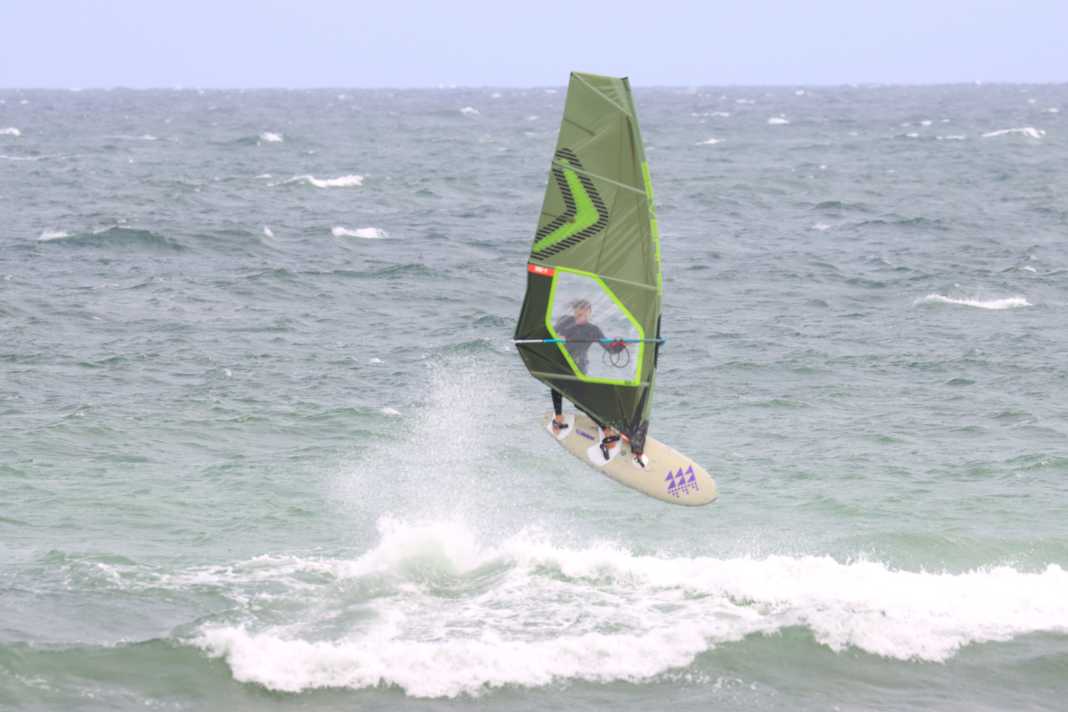





In addition to the pure wave models T-Wave and Q-Wave, the Rostock-based custom manufacturer Windflüchter also has the FreeWave in its programme - this is intended to score points as a planing board, especially in moderate wave conditions. We tested the strengths and weaknesses of the concept.
More about Windflüchter:
On land
As with every model in the Windflüchter range, the FreeWave also comes in certain standard sizes, but these can also be supplemented with intermediate sizes on request. Via a configuration tool on the website you can customise the board - which ultimately results in the exact price. The design, footpads, plug spacing and construction method can be put together like a construction kit. Keyword "construction methods": Two constructions are offered: The more robust and approximately 100 to 200 gram heavier Team construction has unidirectional carbon and larger reinforcement layers in the deck, which should be able to withstand the stresses that occur when jumping even better. Alternatively, there is also the so-called Light-construction. With this, our test board in the 95 litre size weighs in at a very appealing 6.0 kilos. The pads are comfortable and well padded, as are the straps. If you want, you can also get the board with double-bolted straps for an extra 30 euros.
Shaper Lutz Graichen also uses a double concave "V" from front to back for the underwater hull. The board has a moderate tail kick at the rear. The Windflüchter FreeWave 95 is equipped with three fin boxes. You also have a free choice of fins; we tested the board with the recommended thruster setup (19/12 centimetres) made from G10 material.

On the water
The FreeWave 95 is balanced and quite stable in the water when bobbing. With the first gust, the board doesn't immediately take off like a freemove model with a single fin, but sits a little more firmly in the water at first - just like a wave board. After that, however, the board scores with good acceleration and achieves a nice, free planing position. The standing position on deck is impeccable, when powered up the board hangs wonderfully lightly on the foot and offers good top speed, which really encourages you to get a taste of the air on the first ramp. We particularly liked the successful combination of a free, agile riding feel on the one hand, but also the necessary control with which the board starts to chop, especially in rough conditions - the continuous "V" in the underwater hull obviously ensures good riding comfort here.
The board also runs smoothly and is easy to control on the edge. Regardless of whether you want to do jibes, duck jibes or carving 360s on the water, the FreeWave willingly fulfils expectations and can be turned with just a little edge pressure. The FreeWave doesn't really offer radically tight radii over the front foot, as on a thoroughbred wave board, but as soon as you take out some speed and ride the turns more over the back foot, you can elicit surprisingly tight hooks from the board, with which moderate surf waves can be worked wonderfully. The fact that the Windflüchter FreeWave holds its speed well in unpressurised waves also underlines its suitability for typical North and Baltic Sea spots.

Windflüchter FreeWave - the conclusion
While other brands sometimes use the label "Freewave" to refer to a freemove concept for heating and jibing with only moderate turning characteristics, Windflüchter interprets the freewave concept literally. The FreeWave model therefore impresses as an agile, easy-turning and very controllable board for jumping, heating and wave riding on moderate North Sea and Baltic Sea days. The FreeWave is the right choice for anyone who enjoys a balance between days with moderate surf and bump & jump conditions.
Windwing FreeWave 95 - technical data
- Volume: 95 litres
- Length: 226 cm
- Width: 61 cm
- Weight (surf measurement): 6.00 Kilo
- Finns: X/XX (1x US box, 2x slot box)
- Price: 2775 Euro (depending on equipment)
- Available sizes: 86/95/105/115/120 litres
- Contact: Windflüchter website
- Special features: Individual customisation options

